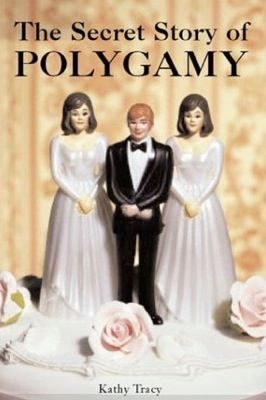Perfectly pedestrian polygamists
 If I were queen of the world, I'd forbid reporters from using any variation of the they're just like you and me theme for stories. It's bad enough when Us Weekly does it with a photo package of celebrities shopping and walking their dogs. But when mainstream reporters do it, it's embarrassing. Back when Big Love -- HBO's drama about attractive and perfectly pedestrian polygamists -- debuted, critics all emphasized how normal their marriage seemed. And a recent New York Times article on gay parents and their reproductive donors forming multi-parent families also emphasized normalcy.
If I were queen of the world, I'd forbid reporters from using any variation of the they're just like you and me theme for stories. It's bad enough when Us Weekly does it with a photo package of celebrities shopping and walking their dogs. But when mainstream reporters do it, it's embarrassing. Back when Big Love -- HBO's drama about attractive and perfectly pedestrian polygamists -- debuted, critics all emphasized how normal their marriage seemed. And a recent New York Times article on gay parents and their reproductive donors forming multi-parent families also emphasized normalcy.
This style of reporting smacks of advocacy, which is one reason I oppose it. But it also betrays a lack of understanding about why some people oppose polygamy or various other lifestyle choices. Certainly people are troubled by the rampant child sexual abuse and abandonment of young males that plagues polygamous communities. But it's possible to oppose polygamous marriage on principle and for far more nuanced and subtle reasons then thinking "them people sure are weird."
Which brings us to a New York Times story by Lee Jenkins about a young basketball star whose parents are in a polygamous marriage. The well-written and interesting story ran in the sports section and began this way:
When the cheering section for Joe Darger is at full strength, it includes his father, his mother, his 18 siblings and his father's other wife.
They wear red T-shirts, blow on red noisemakers and wave red pompoms. They appear no different from any other group in the U.N.L.V. family section -- only larger and louder.
Really? I thought they would have horns and green skin!
College basketball has plenty of experience with nontraditional family structures: parents in jail, parents in shelters, parents missing entirely. Joe grew up with three parents in the house.
See, Darger's experience is no different than anyone else's! Are we getting the message yet?
"I know the kid really well, and I like him a lot," said Rick Majerus, a former Utah coach, who recruited Joe in high school. "I met the family, and they were very nice people -- certainly loved their son and cared about him."
 Which surprised me, since I figured his parents loathed him.
Which surprised me, since I figured his parents loathed him.
John Darger is a 60-year-old real estate developer with bushy gray hair, a thin goatee and a deep singing voice. He grew up with 46 siblings. His father had several wives. Polygamy was passed down like a family heirloom.
When John met Carollee 32 years ago, he was a construction worker and a member of the Church of Jesus Christ of Latter-day Saints. They were married in the Salt Lake Temple. For anniversaries, John still writes songs for Carollee.
John considers himself a Mormon, but he is no longer recognized as one. Because polygamy is illegal and the church renounced the practice more than a century ago, John said that he had been excommunicated. His children, however, remain active members of the church and have given no indication that they will practice polygamy.
See, they're even more romantic than most couples! They're not just normal -- they're better. I must mention that I appreciate the way the reporter concisely explained the polygamists' relationship with the Church of Jesus Christ of Latter-day Saints. I also find it interesting that the children are active Mormons while the parents aren't. For one thing I wonder how the children can be part of a church that condemns the polygamy of their very family and whether that causes any friction. Does this happen frequently where excommunicated Mormons have children in the church?
As Carollee relaxed on the beanbag chair, children came and went. Her sons cooked burritos. Her daughters gave each other massages. When polygamy was raised as a topic of conversation, they laughed. They say they think it is amusing that people are so fascinated by it.
"We are just people," Carollee said. "We are normal people."
Okay, we get it. Polygamists put their pants on one leg at a time. People with unorthodox marriages are normal. They're less threatening than the Red Hat Society. It's been beaten into me. I relent.
I feel a bit of regret for being so negative about this story. It's a generally well-written feature on the sports page, and I'm sure most readers were just entertained by the novelty of it all.
But this "everyone is normal" theme is just overdone. Is it too much to ask for a new approach with stories about groups such as these? If everyone is normal, after all, then no one is newsworthy.